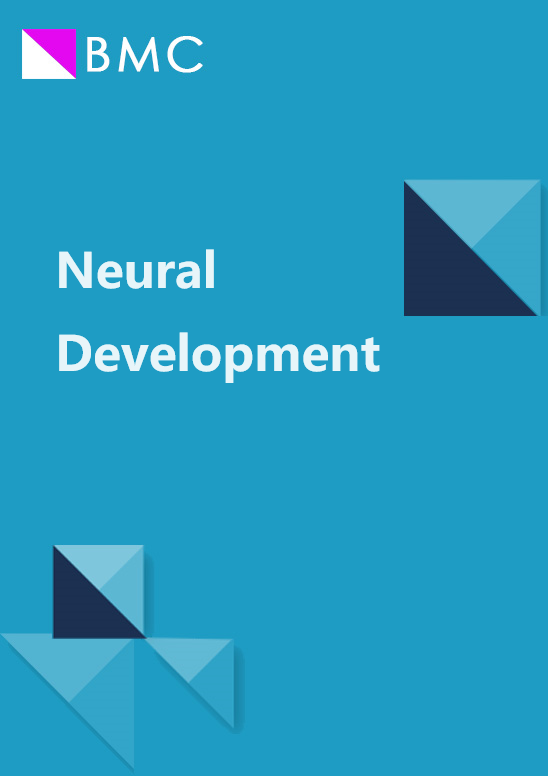DSCAM is differentially patterned along the optic axon pathway in the developing Xenopus visual system and guides axon termination at the target
IF 2.5
3区 生物学
Q1 DEVELOPMENTAL BIOLOGY
引用次数: 0
Abstract
The Xenopus retinotectal circuit is organized topographically, where the dorsal–ventral axis of the retina maps respectively on to the ventral-dorsal axis of the tectum; axons from the nasal-temporal axis of the retina project respectively to the caudal-rostral axis of the tectum. Studies throughout the last two decades have shown that mechanisms involving molecular recognition of proper termination domains are at work guiding topographic organization. Such studies have shown that graded distribution of molecular cues is important for topographic mapping. However, the complement of molecular cues organizing topography along the developing optic nerve, and as retinal axons cross the chiasm and navigate towards and innervate their target in the tectum, remains unknown. Down syndrome cell adhesion molecule (DSCAM) has been characterized as a key molecule in axon guidance, making it a strong candidate involved in the topographic organization of retinal fibers along the optic path and at their target. Using a combination of whole-brain clearing and immunohistochemistry staining techniques we characterized DSCAM expression and the projection of ventral and dorsal retinal fibers starting from the eye, following to the optic nerve and chiasm, and into the terminal target in the optic tectum in Xenopus laevis tadpoles. We then assessed the effects of DSCAM on the establishment of retinotopic maps through spatially and temporally targeted DSCAM knockdown on retinal ganglion cells (RGCs) with axons innervating the optic tectum. Highest expression of DSCAM was localized to the ventral posterior region of the optic nerve and chiasm; this expression pattern coincides with ventral fibers derived from ventral RGCs. Targeted downregulation of DSCAM expression on ventral RGCs affected the segregation of medial axon fibers from their dorsal counterparts within the tectal neuropil, indicating that DSCAM plays a role in retinotopic organization. These findings together with previous studies demonstrating cell-autonomous roles for DSCAM during the development of pre- and postsynaptic arbors in the Xenopus retinotectal circuit indicates that DSCAM exerts multiple roles in coordinating axon targeting and structural connectivity in the developing vertebrate visual system.DSCAM在发展中的爪蟾视觉系统中沿视轴突通路有不同的模式,并在目标处引导轴突终止
爪蟾的视顶板回路是按地形组织的,其中视网膜的背-腹轴分别映射到顶盖的腹-背轴上;视网膜鼻-颞轴的轴突分别指向顶盖的尾-吻轴。过去二十年的研究表明,涉及适当终止域的分子识别的机制正在指导地形组织。这些研究表明,分子线索的梯度分布对地形测绘很重要。然而,沿着发育中的视神经组织地形的分子线索的补充,以及当视网膜轴突穿过交叉并导航到顶盖中的目标并支配它们时,仍然未知。唐氏综合征细胞粘附分子(DSCAM)被认为是轴突引导的关键分子,使其成为参与视网膜纤维沿光路及其靶点的地形组织的强有力的候选者。利用全脑清除和免疫组织化学染色技术的结合,我们表征了DSCAM的表达和视网膜腹侧和背侧纤维的投射,从眼睛开始,沿着视神经和交叉,进入视神经顶骨的最终目标。然后,我们通过在空间和时间上靶向地敲低DSCAM对支配视神经顶盖的视网膜神经节细胞(RGCs)的影响,评估了DSCAM对视网膜定位图建立的影响。DSCAM在视神经后腹区和视交叉的表达最高;这种表达模式与来源于腹侧rgc的腹侧纤维一致。有针对性地下调腹侧RGCs上DSCAM的表达会影响顶侧神经细胞内内侧轴突纤维与背侧轴突纤维的分离,表明DSCAM在视网膜异位组织中起作用。这些发现和先前的研究表明,DSCAM在爪蟾视网膜回路上突触前和突触后轴突的发育过程中发挥了细胞自主作用,这表明DSCAM在脊椎动物视觉系统发育中协调轴突靶向和结构连接方面发挥了多种作用。
本文章由计算机程序翻译,如有差异,请以英文原文为准。
求助全文
约1分钟内获得全文
求助全文
来源期刊

Neural Development
生物-发育生物学
CiteScore
6.60
自引率
0.00%
发文量
11
审稿时长
>12 weeks
期刊介绍:
Neural Development is a peer-reviewed open access, online journal, which features studies that use molecular, cellular, physiological or behavioral methods to provide novel insights into the mechanisms that underlie the formation of the nervous system.
Neural Development aims to discover how the nervous system arises and acquires the abilities to sense the world and control adaptive motor output. The field includes analysis of how progenitor cells form a nervous system during embryogenesis, and how the initially formed neural circuits are shaped by experience during early postnatal life. Some studies use well-established, genetically accessible model systems, but valuable insights are also obtained from less traditional models that provide behavioral or evolutionary insights.
 求助内容:
求助内容: 应助结果提醒方式:
应助结果提醒方式:


